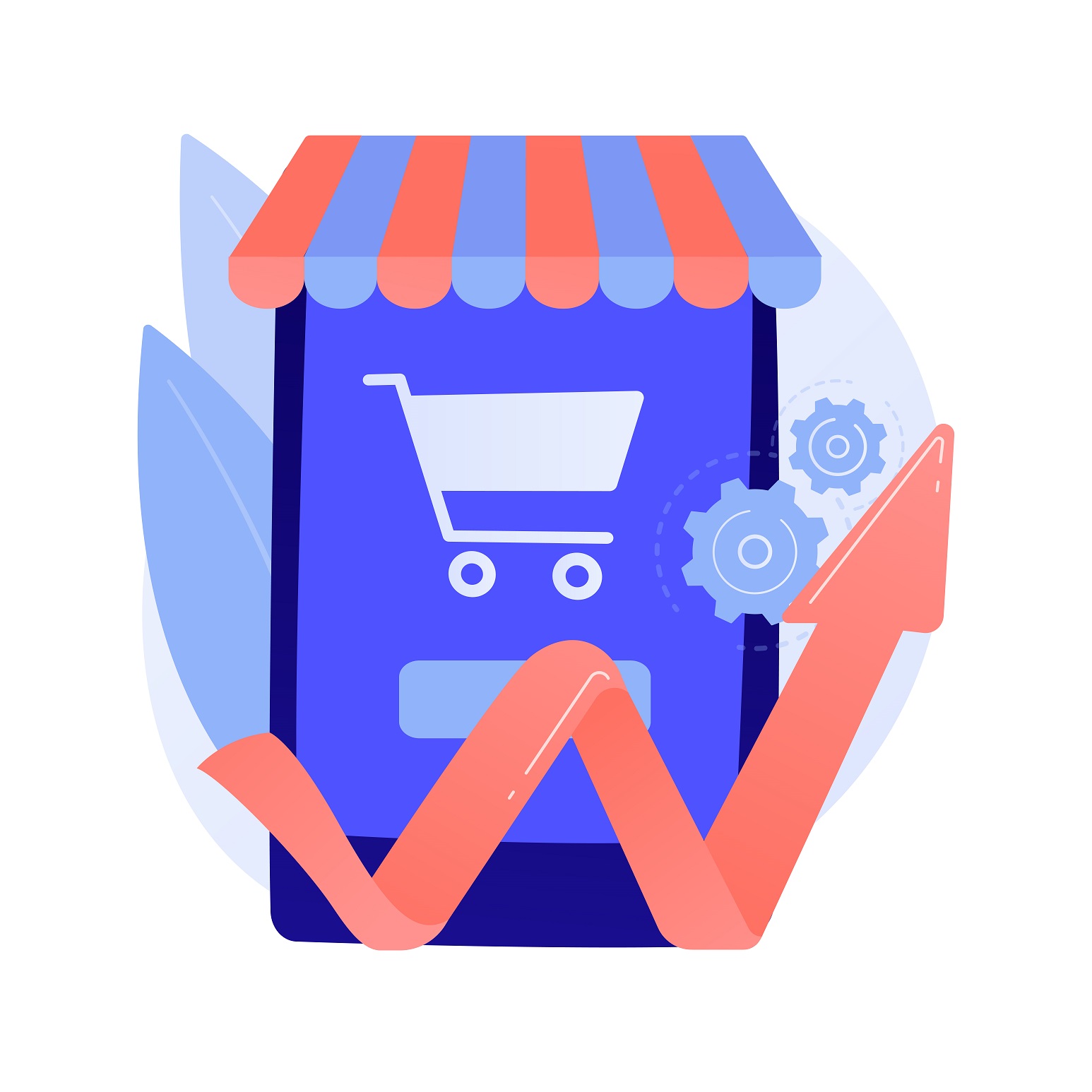Step-by-Step: How to Use AI to Boost Your Online Sales
In this comprehensive guide, we explore the transformative power of Artificial Intelligence in the e-commerce landscape. Starting with the basics, we guide you through its strategic integration into online sales, addressing potential challenges and underscoring the myriad benefits. Embracing AI is more than just staying updated with technology; it’s about positioning your business in a future rich with personalized customer experiences, streamlined operations, and data-driven insights. Join us on this enlightening journey towards achieving AI-enhanced e-commerce excellence.
I. Introduction: The Age of AI in E-commerce
A. The Rise of AI in Modern Business
We’re living in a truly transformative age, aren’t we? Just think about it: a mere couple of decades ago, the idea of shopping from the comfort of our homes was just a budding concept. Now, we’ve gone leaps beyond, not just shopping online but employing sophisticated algorithms to enhance our shopping experiences. Welcome to the modern business landscape where Artificial Intelligence isn’t just a sci-fi term but a tangible driving force.
In its infancy, AI was a lofty dream of tech moguls and futurists. But its rapid evolution over the past few years has positioned it as a cornerstone of modern business strategies. With automation, data analysis, and customer insights growing ever more crucial, AI stands as a beacon of efficiency. Major corporations to budding startups, everyone’s catching on to the magic AI brings. It’s no longer about keeping up with the competition; it’s about staying ahead. And in this cutthroat world of business, AI has emerged as the ace up many a sleeve.
B. Overview: AI’s Role in Boosting Sales
When it comes to online sales, what’s the ultimate goal for any e-commerce business? It’s simple: understanding the customer. And, to be fair, it’s easier said than done. With a vast ocean of data out there, how do we pinpoint exactly what our customers want? Enter AI.
AI delves deep into this sea of data, fishing out patterns and trends that the human eye might overlook. It personalizes the shopping journey, making product suggestions that align with individual user preferences and browsing history. Remember the last time an online store seemed to ‘know’ you wanted those sneakers even before you realized it? That’s AI in action.
Furthermore, AI streamlines operations, reducing overheads and errors. It predicts market trends, enabling businesses to stock up on the ‘right’ products. It even plays a role in setting optimal price points, ensuring maximum profitability while offering customers the best deals. In essence, AI isn’t just a tool; it’s a dynamic sales strategy. A strategy that discerns, deduces, and delivers, ensuring e-commerce businesses stay not just relevant but indispensable in their customers’ lives.
The age of AI in e-commerce is here, and it’s not just about technology. It’s about weaving that technology seamlessly into the fabric of business, creating richer, more satisfying shopping experiences for all.
II. Understanding the Basics of AI for Online Sales
A. What is AI and How Does it Work?
You’ve probably heard the term ‘AI’ tossed around in tech discussions or seen it in the headlines. But what does it really mean? At its core, Artificial Intelligence is a multidisciplinary branch of science that aims to create machines capable of mimicking human intelligence. It’s not just about coding a computer to perform a task; it’s about teaching that computer to think and learn from its experiences.
Imagine a student, eager to learn, absorbing information, and improving over time. That’s AI for you, except this student never sleeps, never tires, and processes information at an astonishingly fast pace. Using algorithms and neural networks, AI delves into vast amounts of data, finds patterns, makes predictions, and takes action. And just like any student, the more data (or ‘experience’) it gets, the better it becomes at its job.
B. Different Types of AI Tools for E-commerce
The world of e-commerce has been particularly blessed with a variety of AI tools tailored to suit different needs. Here’s a quick rundown:
- Chatbots: Ever chatted with a customer service rep on a website, only to later discover it was a machine? That’s a chatbot for you. They handle customer queries, offer product suggestions, and even help in checkout processes.
- Recommendation Engines: Think about those “You might also like…” prompts. These engines analyze user behavior and preferences to suggest products.
- Predictive Analysis: This tool helps businesses anticipate market trends, allowing them to adjust their strategies accordingly.
- Visual Recognition: AI tools that help shoppers find products by simply uploading an image. Snap a picture, and let the AI find it for you!
C. The Immediate Benefits of Integrating AI into Your Sales Strategy
The question isn’t just “Why should you integrate AI?” but rather “Why haven’t you already?”. The immediate benefits are compelling:
- Personalized Shopping Experiences: AI crafts tailored shopping journeys for users, making them feel valued and understood.
- Efficiency and Accuracy: From stock management to pricing, AI ensures operations are smooth and error-free.
- Enhanced Customer Service: With tools like chatbots, customers get instant responses, leading to increased satisfaction.
- Data-driven Decisions: No more guesswork. With AI, decisions are based on data, ensuring they’re always aligned with market needs.
- Cost Savings: While there’s an initial investment, the efficiency and growth AI brings ensure a handsome ROI.
AI isn’t a mere trend; it’s a paradigm shift. And in the world of online sales, it’s rapidly moving from a ‘nice-to-have’ to an absolute essential.
III. Setting the Foundation: Preparing Your Online Store for AI Integration
A. Evaluating Your Current Sales Strategy
Before diving into the vast ocean of AI, it’s crucial to anchor oneself by evaluating the current sales strategy. The reason is simple: integrating AI is not about replacing what you have, but enhancing it. Begin by answering these questions:
- Which areas in your sales funnel show the most drop-offs?
- Are there aspects of your customer service getting recurrent complaints?
- Is your inventory management as efficient as you’d like?
Once you’ve highlighted areas of improvement, you’re better positioned to decide where AI can be most impactful. It’s somewhat like going to a doctor; the clearer you are about your symptoms, the more precise the diagnosis.
B. Data Collection and Management: The Heartbeat of AI
For AI, data is like oxygen. The quality and quantity of data you provide it will significantly influence its performance. Begin by auditing your data collection methods. Are you capturing all relevant customer interactions? This includes purchase histories, product views, and even cart abandonment reasons.
Once you have the data, managing it is equally vital. Store it in easily accessible formats, regularly clean it to remove redundancies, and ensure it’s protected to retain customer trust. Remember, an AI tool is only as good as the data fueling it.
C. Choosing the Right AI Tools for Your Business Needs
With the foundation set, it’s time to select the right AI tools. But given the plethora, how does one decide?
- Identify Core Needs: Based on your earlier evaluation, list down the specific challenges you want AI to address.
- Budget Considerations: AI tools vary in pricing. Some offer monthly subscriptions, while others might have a one-time fee. Ascertain what works for your financial structure.
- Ease of Integration: Consider tools that seamlessly integrate with your existing infrastructure. The lesser the overhaul, the smoother the transition.
- Reviews and Case Studies: See what other businesses, especially those similar to yours, are saying about the AI tools you’re considering.
Your choice should not be driven by the fanciest tool in the market but by what aligns with your business’s unique needs and goals. After all, AI is not about getting onto the latest trend; it’s about ensuring sustained and meaningful growth.
IV. Step-by-Step Guide to Boosting Sales with AI
A. Personalizing Customer Experiences with AI-driven Recommendations
In an age where consumers are bombarded with countless product choices, personalization is not a luxury; it’s a necessity. AI can dissect the vast volumes of data at its disposal to discern patterns, likes, and preferences unique to each user. By doing so, it can curate product recommendations that resonate. Think of platforms like Amazon or Netflix. Ever wondered how they seem to “know” what you might like next? That’s AI-driven personalization in action. Implementing such features can mean the difference between a one-time purchase and a loyal customer.
B. Enhancing Search Functions with AI-powered Search Tools
We’ve all been there – you type something into a store’s search bar, and either nothing relevant comes up or there’s an overwhelming number of unrelated products. AI can refine this. With natural language processing, AI-powered searches can understand user intent better, making results more relevant. Plus, with continuous learning, these tools improve over time, ensuring that the search experience becomes increasingly seamless.
C. Streamlining Customer Service through Chatbots and Virtual Assistants
The digital consumer is impulsive and expects instant gratification. They don’t want to wait hours or days for a response to their queries. Enter chatbots and virtual assistants. These AI-powered tools can handle multiple customer inquiries simultaneously, providing immediate, accurate responses. Not only does this speed up resolution times, but it also frees up your human resources to handle more complex tasks.
D. Predicting Future Sales Trends with AI Analytics
Imagine having a crystal ball that could predict future market trends. AI analytics is pretty much that. By examining past and present data, AI can identify patterns and make informed predictions about future sales trends. This can guide inventory decisions, marketing strategies, and more, ensuring businesses are always a step ahead.
E. Optimizing Pricing Strategies using AI Algorithms
Pricing is a delicate dance. Price too high and you alienate customers; too low, and you’re leaving money on the table. AI can analyze factors like demand, competitor pricing, and market trends to suggest optimal pricing points. Furthermore, dynamic pricing strategies can be implemented, where prices adjust in real-time based on various factors, ensuring competitiveness and profitability.
Incorporating AI into your sales strategy is not about replacing the human touch, but about amplifying it. With AI handling the heavy lifting of data analysis, businesses can focus on what they do best – providing exceptional value and building meaningful customer relationships.
V. Overcoming Potential Challenges
A. Addressing Common Concerns: Privacy and Security in AI
In the tech-driven world we inhabit, privacy and security concerns are paramount, more so when integrating sophisticated tools like AI. As businesses amass enormous amounts of data to feed into AI algorithms, the risk associated with potential breaches grows. To address this, it’s vital to incorporate end-to-end encryption and robust cybersecurity measures. Another significant aspect is being transparent with your customers. They should know what data is being collected, how it’s being used, and the measures in place to protect it. Keeping an open channel of communication fosters trust, assuring customers that their information is in safe hands.
B. Training Your Team to Utilize AI Effectively
AI can be likened to a high-performance sports car. No matter how advanced it is, without a skilled driver at the helm, its capabilities are underutilized. The same holds true for AI. Investing in proper training sessions ensures that your team understands the nuances of the AI tools at their disposal, maximizing effectiveness. Periodic workshops and refresher courses can keep them abreast of updates and best practices. Remember, technology is only as good as the hands it’s in.
C. Continuously Monitoring and Updating Your AI Tools
AI isn’t a set-it-and-forget-it tool. As the digital landscape evolves, so should your AI strategies. Regularly monitoring performance metrics can give insights into what’s working and what’s not, allowing for timely tweaks. Plus, the world of AI is continuously advancing. New features, improved algorithms, and more efficient processes are constantly being developed. Keeping your AI tools updated ensures that you’re always leveraging the best the tech world has to offer.
Overcoming challenges is a natural part of any business evolution. But with a proactive mindset, proper resources, and a commitment to excellence, these challenges not only become surmountable but also pave the way for unmatched growth and success.
VI. Conclusion: Embracing the Future of E-commerce with AI
A. The Long-term Impact of AI on Online Sales
Stepping into the digital horizon, it’s evident that AI is not just a fleeting trend but an instrumental force reshaping the very fabric of e-commerce. Beyond the immediate benefits of personalized experiences and streamlined operations, the long-term implications are profound. As AI algorithms continue to learn and evolve, online stores will experience unprecedented levels of efficiency, accuracy, and customer satisfaction. It won’t just be about selling a product but creating holistic experiences that resonate deeply with consumers. Businesses that fail to adapt may find themselves struggling to compete in a marketplace where consumers have grown accustomed to the heightened convenience and personal touch that AI brings. In essence, AI is poised to redefine what we consider the norm in e-commerce.
B. Key Takeaways and Next Steps for Your Business
Harnessing the might of AI is not a destination but a journey. Here are some focal points to consider:
- Prioritize a culture of continuous learning. The AI landscape is dynamic; staying updated is crucial.
- Always place the customer at the center. Use AI to enhance their journey, not just boost sales.
- Data integrity matters. Ensure that the data feeding into your AI systems is clean, relevant, and updated.
- Embrace a mindset of adaptability. Be ready to pivot your strategies based on real-world results and feedback.
As you move forward, remember that integrating AI is a significant investment in your business’s future. It’s not about hopping onto a bandwagon but about preparing your venture for a world where AI-driven e-commerce isn’t just an advantage but a standard. Now is the time to take those decisive steps, laying the foundation for long-term growth and success.







